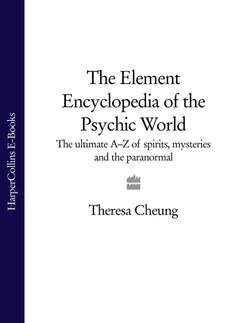Читать книгу The Element Encyclopedia of the Psychic World: The Ultimate A–Z of Spirits, Mysteries and the Paranormal - Theresa Cheung, Theresa Cheung - Страница 214
CROSS CORRESPONDENCES
ОглавлениеA method used extensively in the early twentieth century to test the powers of mediums. The correspondences were made up of the same or similar information allegedly from discarnate entities delivered to mediums while they were in a trance or through automatic writing.
It is difficult to explain how these messages occur, and many psychical researchers believe they provide good evidence to support the case for life after death. Others believe that the mediums draw the information from their own unconscious or from others using telepathy or clairvoyance.
Between 1900 and 1932, cross correspondences were studied intensively by the Society for Psychical Research, in particular, by Frederick Myers. Myers believed that human life might continue after death and that finding evidence for it required the help of the dead - in fact, the dead would have the best idea for how the living could discover this evidence. He stated that producing this evidence would require a group effort on the part of several spirits rather than just contact with one spirit.
Cross correspondences were produced during Myers’ lifetime by several mediums. Words spoken under trance and written during automatic writing sessions by mediums sitting at the same time but in different locations showed similarities to one another. But it was after Myers’ death in 1901 that cross correspondences became more frequent; a message delivered to one medium would be undecipherable until combined with a message from another.
By 1918 the Society for Psychical Research concluded that cross correspondences did form large, interlinked groups and were evidence for survival after death. However others, such as another of the Society’s founding members, Frank Pod-more, believed they were the result of telepathic communication among the living.
Interest in cross correspondences faded in the 1930s, and although they do appear now and again in psychical research, today they are not studied with great interest.
